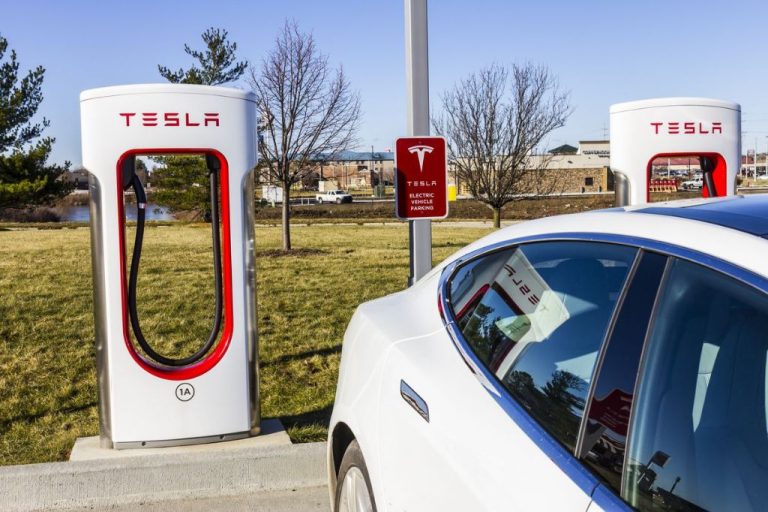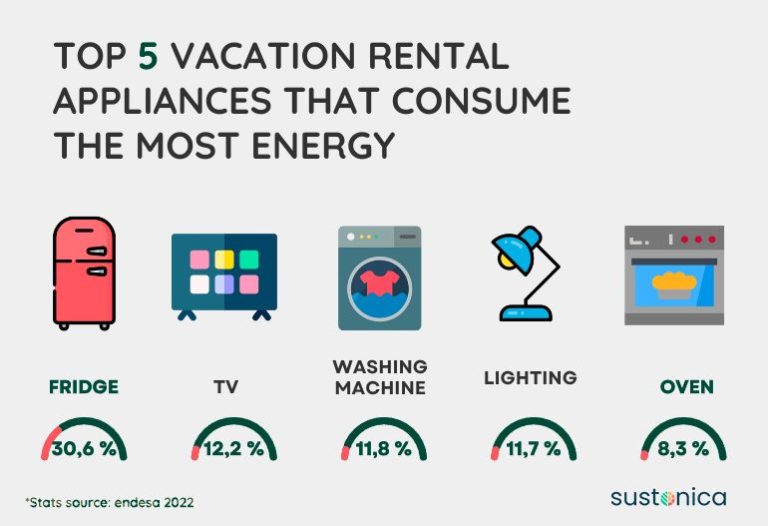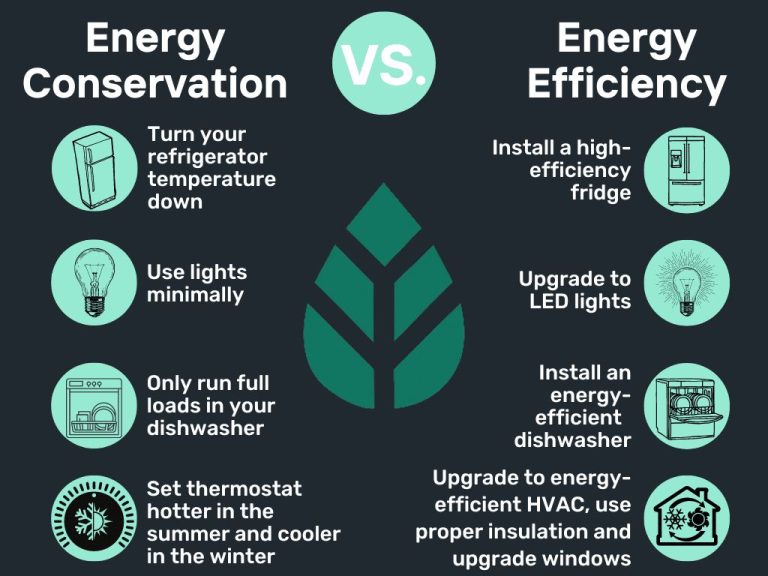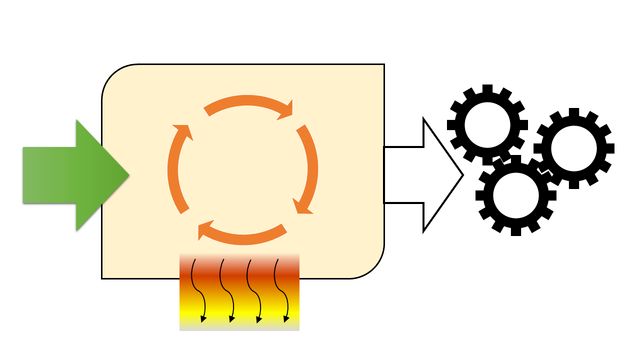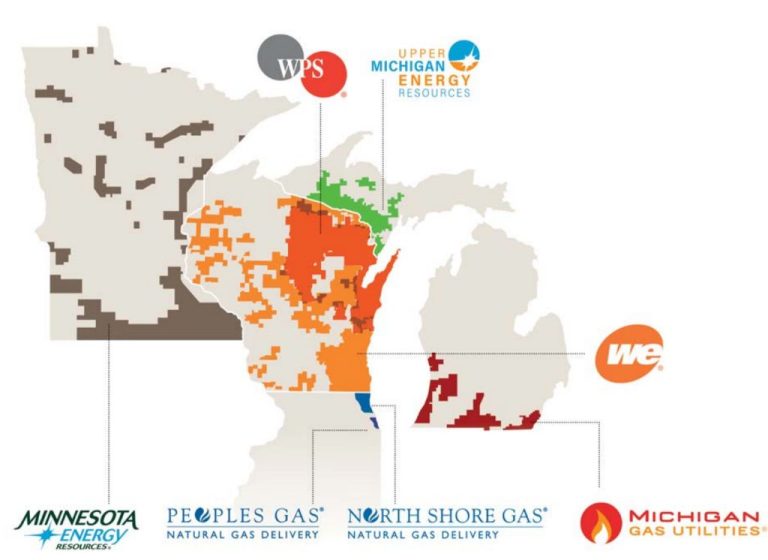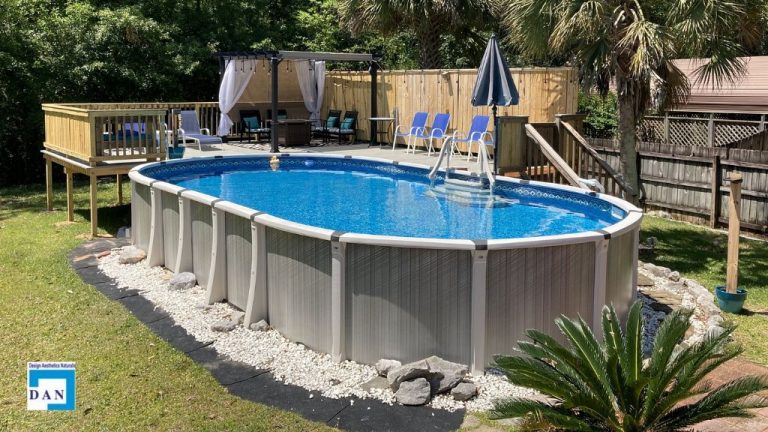How Can Buildings Achieve Net Zero?
What ‘net zero’ means for buildings
A net zero energy building is one that produces as much renewable energy onsite as it consumes over the course of a year, resulting in a net zero energy balance (1). The key principles of a net zero building include:
- Extremely high levels of energy efficiency – the building envelope, lighting, appliances, ventilation systems etc. must all be extremely efficient to minimize energy use.
- 100% of the remaining energy needs are met by onsite renewable energy such as solar PV or wind power (2).
- The building generates at least as much renewable energy as it consumes annually.
Therefore, a true net zero energy building has zero net energy consumption from the electricity grid annually. This is achieved through a combination of energy efficiency, onsite renewable energy generation, and performance monitoring (3).
Why net zero buildings matter
Net zero buildings are critical for reducing greenhouse gas emissions and mitigating climate change. Buildings account for nearly 40% of global CO2 emissions, with operational emissions from energy needed for heating, cooling, and power accounting for 28% (Benefits of Low-carbon Buildings in the US). By achieving net zero, buildings would effectively contribute no greenhouse gas emissions over the course of a year.
Net zero buildings are energy efficient and meet their energy needs through on-site renewable sources, rather than relying on fossil fuels. According to the US Department of Energy, transitioning to net zero buildings could potentially reduce CO2 emissions by 135 million metric tons per year by 2030 and 245 million metric tons annually by 2050 (Common Definition for Zero Energy Buildings). This would significantly contribute to national and global climate change mitigation efforts.
In addition to emission reductions, net zero buildings provide energy independence and cost savings. By generating their own clean power, net zero buildings are buffered from volatile fossil fuel prices and grid supply issues. They also have significantly lower utility bills compared to conventional buildings (20 Advantages of Living in a Zero Energy Home). The investment in energy efficiency and renewables pays back over time through ongoing energy savings.
Building envelope and insulation
One of the most critical components of achieving net zero energy in buildings is having an airtight, well-insulated envelope. This includes all surfaces that separate the interior conditioned space from the exterior – walls, roof, foundation, windows and doors. A high performance building envelope is key for reducing heating and cooling loads.
Experts recommend insulation levels much higher than standard code minimums for net zero buildings. Superinsulation with at least R-40 walls and R-60 ceiling insulation is recommended in cold climates, along with minimal thermal bridging. Achieving a near airtight enclosure of 0.6 ACH or less is also critical through air sealing, high quality windows, and careful detailing.
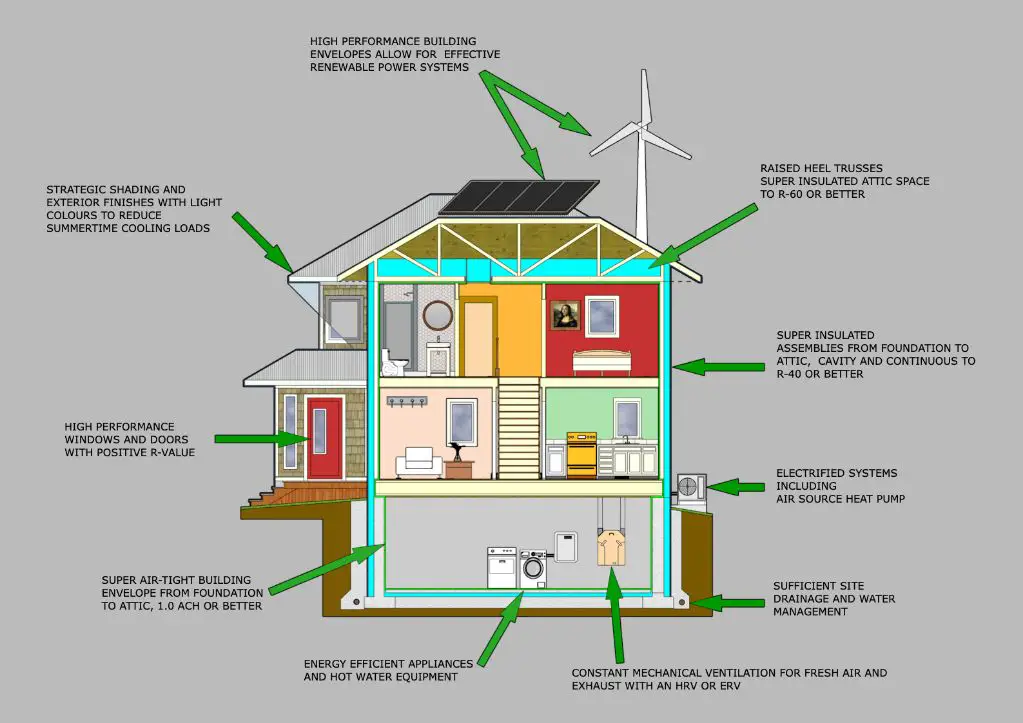
High performance triple pane windows with low U-factors below 0.20 and low solar heat gain coefficients are ideal, oriented strategically for passive solar heating in winter. Avoiding large windows on east and west walls and minimizing window area on other facades reduces unwanted heat gain and loss. A building’s orientation, placement of windows, and use of passive solar design principles can greatly reduce the energy demands of a net zero building.
As this report from Barricade Building Products explains, “A high-performance building envelope allows for downsized mechanical systems, improved comfort, and reduced energy costs” (https://barricadebp.com/news/net-zero-energy-building-envelope). Super insulating the envelope is a fundamental step in constructing an energy efficient net zero building.
HVAC and ventilation
HVAC systems are critical components of achieving net zero energy in buildings. High efficiency HVAC equipment such as variable refrigerant flow (VRF) systems or ground source heat pumps can significantly reduce energy usage for heating and cooling. According to the Department of Energy, high efficiency HVAC systems are a key technology for net zero energy buildings.
Heat recovery ventilation (HRV) can also dramatically improve energy efficiency by recovering heat from exhausted air and transferring it to the incoming fresh air stream. As noted in this article from Mitsubishi, HRV allows ventilation air to be conditioned with up to 80% less energy compared to conventional systems.
Smart HVAC controls that optimize equipment scheduling, temperatures, and airflow are another important element. By dynamically adjusting HVAC operation to occupancy patterns and needs, smart controls can achieve significant energy savings with high comfort levels.
Lighting and appliances
Lighting accounts for 15-30% of electricity use in commercial buildings according to the U.S. Department of Energy (source). To reduce lighting electricity use, net zero buildings utilize energy efficient LED lighting and daylighting strategies. LED lighting can reduce lighting electricity use by 50-70% compared to traditional incandescent and fluorescent lighting (source). Daylighting involves orienting the building and using light shelves, light tubes, and skylights to bring natural light into interior spaces, further reducing the need for artificial lighting.
In addition to lighting, choosing energy efficient appliances and equipment can reduce a building’s electricity use by 20-50% (source). Efficient office equipment, ENERGY STAR rated appliances, and smart lighting controls that turn off lights when not in use are key strategies for net zero buildings.
Water efficiency
Water efficiency measures are a key component of achieving net zero in buildings. By reducing potable water use and utilizing alternative water sources, net zero water buildings aim to eliminate the use of municipal supply or groundwater (Net Zero Water Building Strategies).
Some of the main water efficiency strategies include:
- Low flow fixtures – Using low flow faucets, showerheads, toilets, etc. can significantly reduce water use.
- Rainwater harvesting – Capturing and storing rainwater for non-potable uses like irrigation and flushing toilets.
- Graywater reuse – Treating and reusing wastewater from sinks, showers, washing machines, etc. for flushing toilets, irrigation, and other non-potable uses.
Implementing these types of water efficiency measures allows buildings to greatly reduce their municipal water demand. This is a key step in reaching net zero water use.
Renewable Energy
Renewable energy is essential for buildings to achieve net zero status. The most common renewable energy sources used are solar PV, solar thermal, wind, and geothermal. Solar PV panels convert sunlight into electricity that can power lighting, appliances, and electronics in a building. According to the Zero Energy Buildings Resource Hub, solar PV is the most widely used onsite renewable energy in zero energy buildings (https://www.energy.gov/eere/buildings/zero-energy-buildings-resource-hub).
Solar thermal systems use solar collectors to heat water, which can then provide domestic hot water, hydronic heating, and pool heating. Wind turbines convert the kinetic energy of wind into mechanical power or electricity. Geothermal uses the stable temperatures underground to provide heating and cooling through geothermal heat pumps. These renewable technologies generate clean energy from natural sources and help buildings achieve net zero status.
Energy modeling and performance tracking
Accurately predicting a building’s energy performance is critical to achieving net zero goals. Energy modeling uses whole building energy simulation tools like EnergyPlus, OpenStudio, and Simergy to estimate energy consumption and identify optimization opportunities during the design phase https://netzerobuildings.mit.edu/. Key inputs include the building envelope, mechanical systems, plug loads, and occupancy. The energy model can compare design alternatives and estimate the required renewable energy system size.
After construction, building dashboards display real-time performance data gathered by sensors and smart meters. They track metrics like energy use, temperature, humidity, and occupancy. By comparing actual performance against the energy model, facilities teams can identify issues and opportunities to optimize building operations. Retro-commissioning is the process of systematically improving an existing building’s performance by reviewing operations and maintenance practices.
Ongoing tracking ensures the net zero building continues operating as designed over its lifetime. EnergyStar Portfolio Manager is a free online tool commonly used to benchmark building performance https://www.energy.gov/eere/buildings/zero-energy-buildings-resource-hub. Advanced analytics can detect faults and diagnose their root causes.
Embodied carbon
Embodied carbon refers to the greenhouse gas emissions associated with the materials and construction processes throughout the whole lifecycle of a building. This includes emissions from material extraction, manufacturing, transportation, installation, maintenance, and eventual demolition and disposal.
According to the World Green Building Council, embodied carbon makes up 10-20% of whole life carbon emissions for new construction and can be as high as 80% for some renovation projects. Therefore, reducing embodied carbon is an important strategy for reaching net zero carbon buildings.
Some ways to reduce embodied carbon include:
- Choosing low-carbon and responsibly sourced construction materials like mass timber instead of concrete and steel.
- Designing for material efficiency to reduce waste.
- Reusing existing building structures and materials where possible.
- Using lifecycle assessment tools to calculate and compare the embodied carbon of different design options.
Setting embodied carbon reduction targets early on and tracking progress can help minimize this impact and prevent high-carbon path dependencies.
Getting to net zero
The key to achieving net zero buildings lies in taking an integrated design approach from the very beginning of the project. This involves assembling a collaborative team including the owner, architect, engineers, contractors, and consultants to optimize the building design and systems for maximum energy efficiency and renewable energy generation (Step by step: How to achieve a net zero building – Blog).
There are many financial incentives and programs available to help offset the upfront costs of high-performance buildings, such as tax credits, rebates, and preferential financing and insurance rates. Many utilities offer incentives for energy efficiency measures and on-site renewable energy generation. There are also competitive government grant programs at the federal, state, and local levels that provide funding for the design, construction, and operation of net zero buildings (Net-Zero Emissions Buildings by 2045, including a 50% …).
Building codes and government policies are increasingly prioritizing and even mandating net zero energy performance for new construction. More than 50 U.S. cities have policies requiring new buildings to be net zero capable or highly efficient. Some states and cities provide fast-track permitting, design assistance, and other process incentives for net zero buildings (Back to Basics: 5 Strategies to Approach Net Zero Energy).
While the upfront investment can be greater, net zero buildings have been shown to have lower operating and maintenance costs over the lifespan of the building. The integrated design and financial incentives help make the payback period faster.

